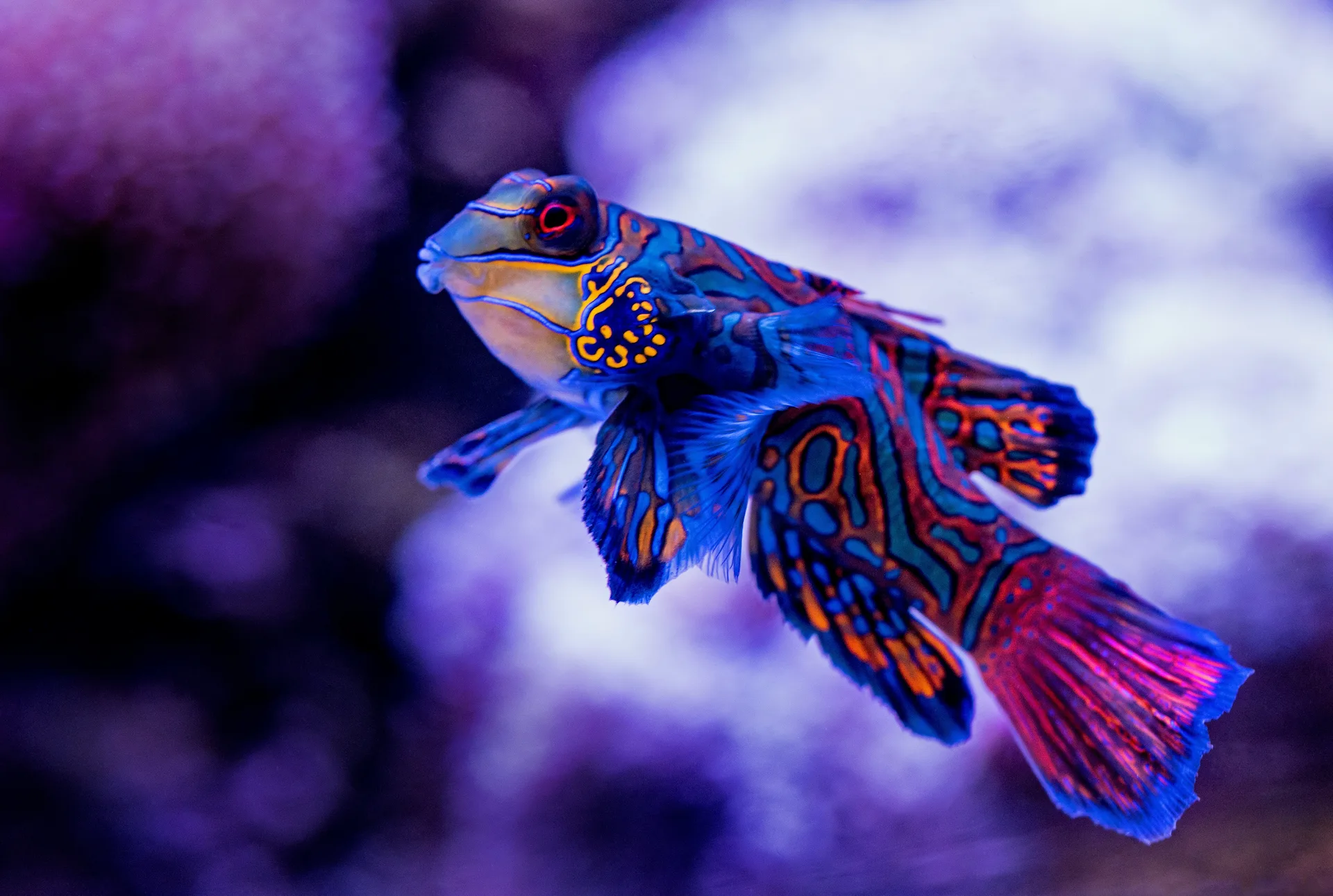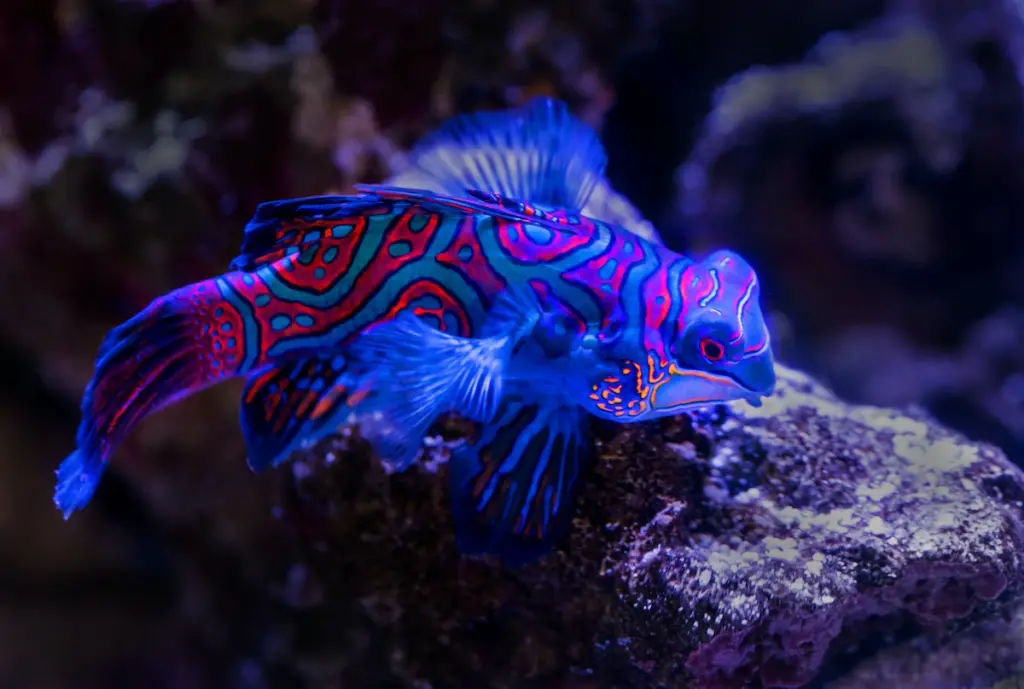What is a Dragonet?
No, they’re not baby dragons … but mandarinfish are just as cool

You might not know them by name, but dragonets’ vibrant colors and elongated dorsal fins make them among the most recognizable species of fish. In fact, dragonets and mandarinfish are two names for the same species. The scientific name is Synchiropus splendidus and we can confirm that they are splendid indeed! Read on to learn more about what makes dragonets so special.
Their Habitat
Dragonets live in coral reefs in the warm waters of the Indo-Pacific Ocean. They can be spotted from southern Japan to northern Australia, burrowed into the sea floor in sandy and weedy beds. They are able to bury their entire bodies up to their eyes! These reefs keep them sheltered and (mostly) safe from predators. It’s also the perfect place to surprise their prey—small crustaceans known as copepods.
Get Ocean Updates in Your Inbox
Sign up with your email and never miss an update.
Their Bright Blue Coloring
Their distinctive, bright blue coloring is actually a major anomaly not only in the ocean but on Earth itself—dragonets can produce their own blue pigment, while most other animals that simply appear blue (such as peacocks) only do so through reflecting light and tricking the eye.
They are Ready to Get Defensive
Being this beautiful is bound to attract attention, and because they lack scales (the first line of defense for most fish), dragonets are unusually vulnerable. Luckily, they have developed a way to protect themselves. They are adorned in tiny spikes that can inject a toxic, smelly mucus into anything trying to devour or handle them. So even though they’re pretty, if you have the honor of encountering a wild one, make sure you give dragonets some space.

Their Reproductive Process
Dragonet reproduction—specifically their courting rituals—have more in common with human behavior than you might think. The dragonet’s spawning practices can be identified by four different stages: courtship display, pairing, ascending and the release of eggs.
The courtship begins by the fish spreading and showing off their pectoral and dorsal fins. Once an “attraction” has been identified through the acceptance of the male by the female, they pair. Following this pairing, they combine and ascend from the bottom of the ocean up a water column, and I don’t think I need to tell you what happens next. The final step results in the release of eggs, which float freely in the water column and eventually disperse.
As you can see, the gorgeous dragonet has more to offer than just their looks. This is just a small introduction to what makes these fish so interesting and why it is so critical that we keep their home—the ocean—protected. Ocean Conservancy is committed to helping the dragonet—and all the animals and fish that live in our seas.